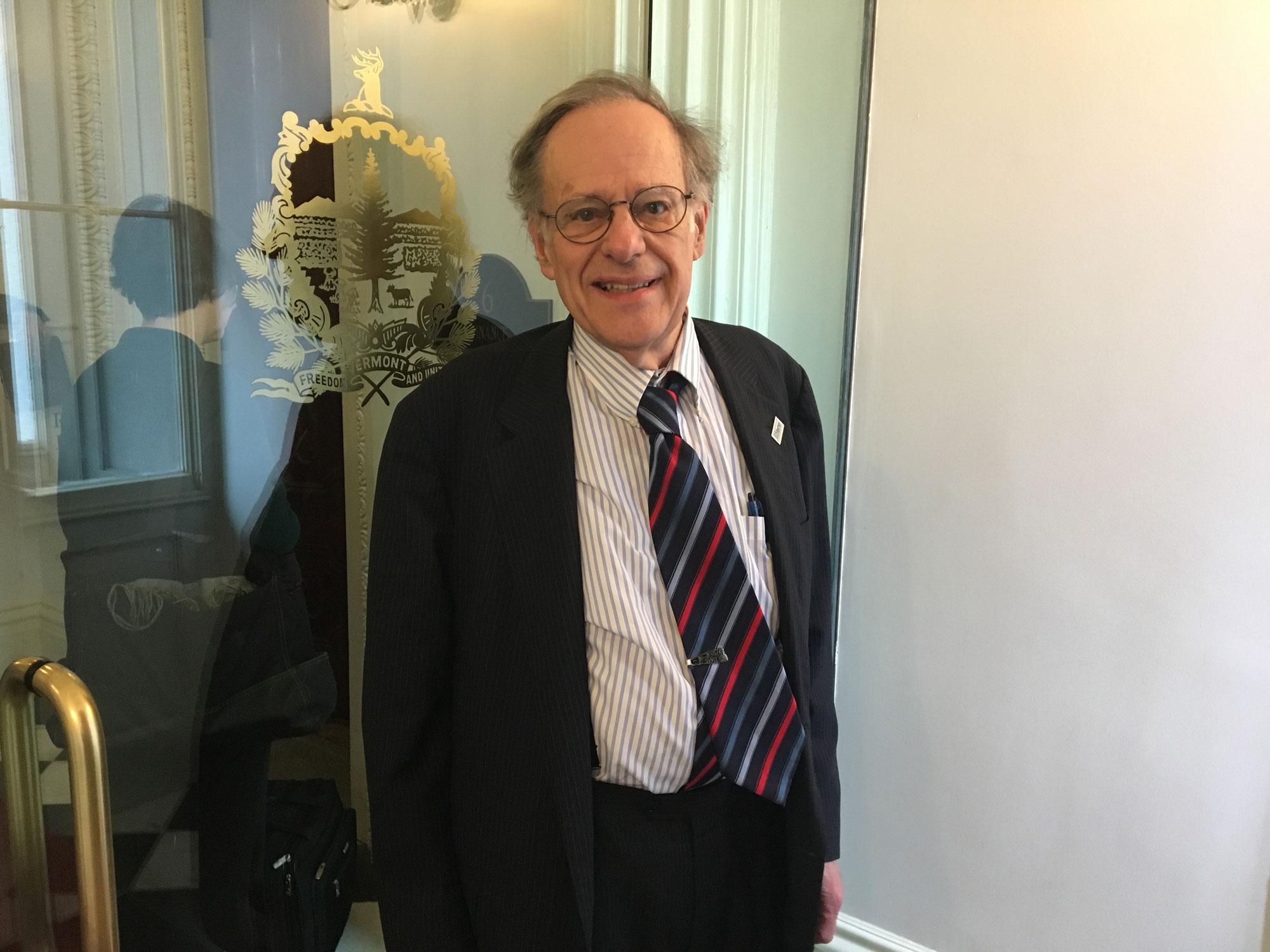Irv Thomae ’62, PhD ’68

“People who have high-speed internet access tend to forget what life was like without it,” says Irv Thomae ’62, PhD ’68, district chair of ECFiber, Vermont’s first community-owned fiber-to-home network. Life without the internet is all too common in Thomae’s home state, where many rural residents aren’t covered because commercial entities deem them unprofitable. “Today, it’s essential for education and new businesses that people be able to collaborate across the globe—and you need the internet to do that,” he says.
State residents, including Thomae, joined forces to form ECFiber early in 2008. The idea was simple: because Vermont law barred using local taxes for such a purpose, residents of two dozen towns in the east central part of the state would work together to fund and build a fiber-optic network delivering internet access to homes and businesses. A retired software developer and a volunteer for various local committees, Thomae was appointed to ECFiber’s governing board. The board had contracted with local telecommunications nonprofit ValleyNet to design, build, and operate the network, and it planned to finance construction by issuing $90 million in revenue bonds.
But when the 2008 financial crisis made bond funding impossible, ECFiber changed course to build just 20 miles as a pilot project. Financed by $900,000 in loans from local investors, construction began in 2011—and quickly drew attention. Over the next four years, an additional $6 million was raised from more than 450 investors with ties to nearby communities. “It was truly a grassroots effort,” says Thomae.
ECFiber’s network now extends more than 750 road miles and serves over 3,400 customers spread across 22 member towns that constitute the first-of-its-kind communications union district (CUD) in Vermont, established in 2015 by the state legislature thanks to advocacy from Thomae and others. Because a CUD is a virtual municipality, ECFiber has been able to finance ongoing construction through the municipal bond market and repay all its costly startup loans.
As ECFiber continues to extend its network to outlying and underserved areas within its territory, Thomae says he is most proud of how the project has united towns of varied means.
“If this were taxpayer funded, the wealthy towns would’ve easily been able to finance and build their own networks, while others would be left out,” he says. And although his evolving role in ECFiber was not consciously chosen as a second career, he adds, “I could never have imagined doing something this satisfying in my retirement.”
Keep Reading
Most Popular
Large language models can do jaw-dropping things. But nobody knows exactly why.
And that's a problem. Figuring it out is one of the biggest scientific puzzles of our time and a crucial step towards controlling more powerful future models.
How scientists traced a mysterious covid case back to six toilets
When wastewater surveillance turns into a hunt for a single infected individual, the ethics get tricky.
The problem with plug-in hybrids? Their drivers.
Plug-in hybrids are often sold as a transition to EVs, but new data from Europe shows we’re still underestimating the emissions they produce.
Stay connected
Get the latest updates from
MIT Technology Review
Discover special offers, top stories, upcoming events, and more.